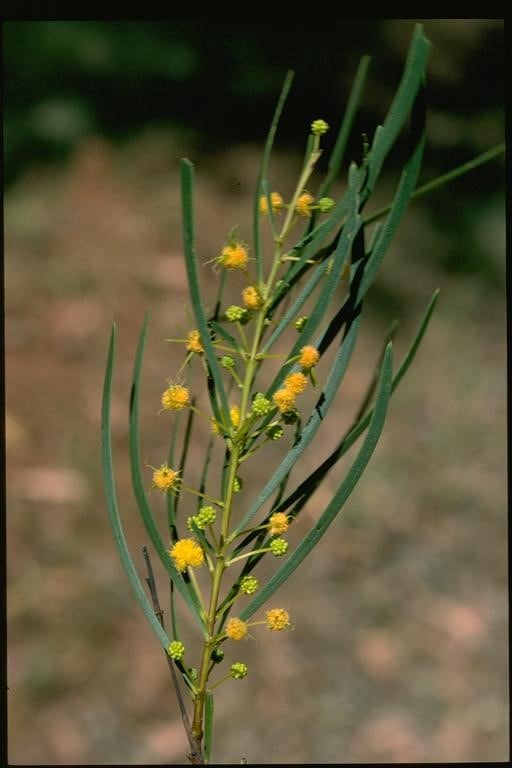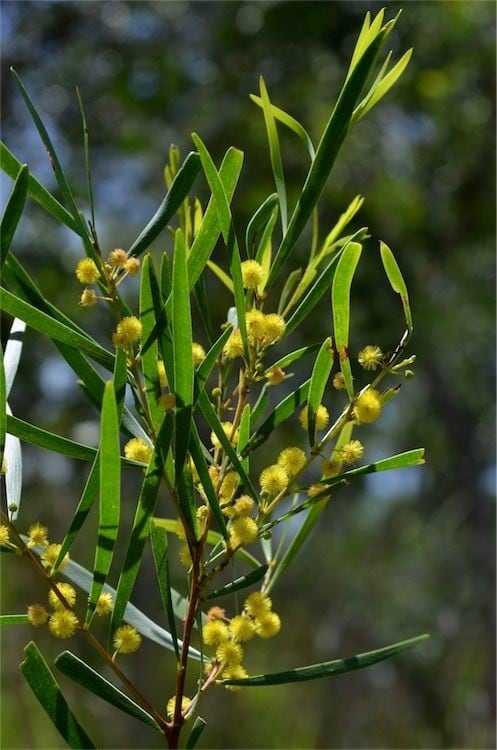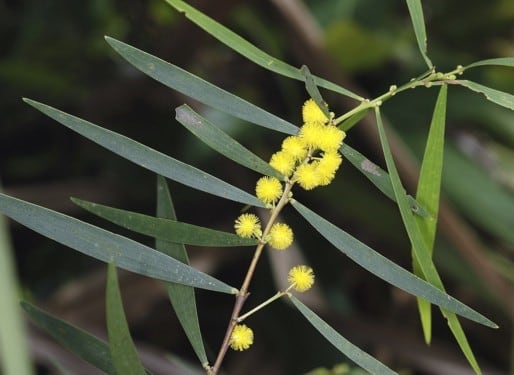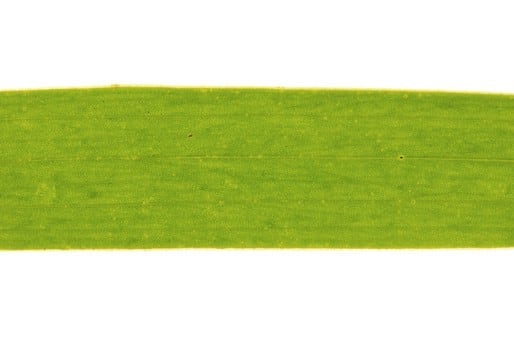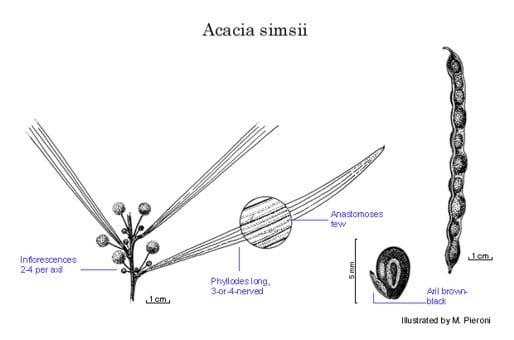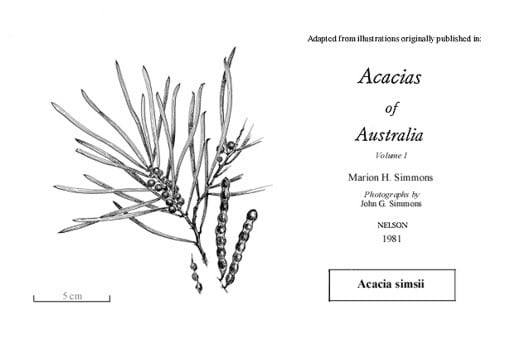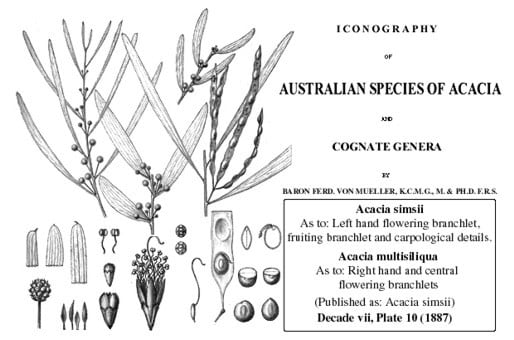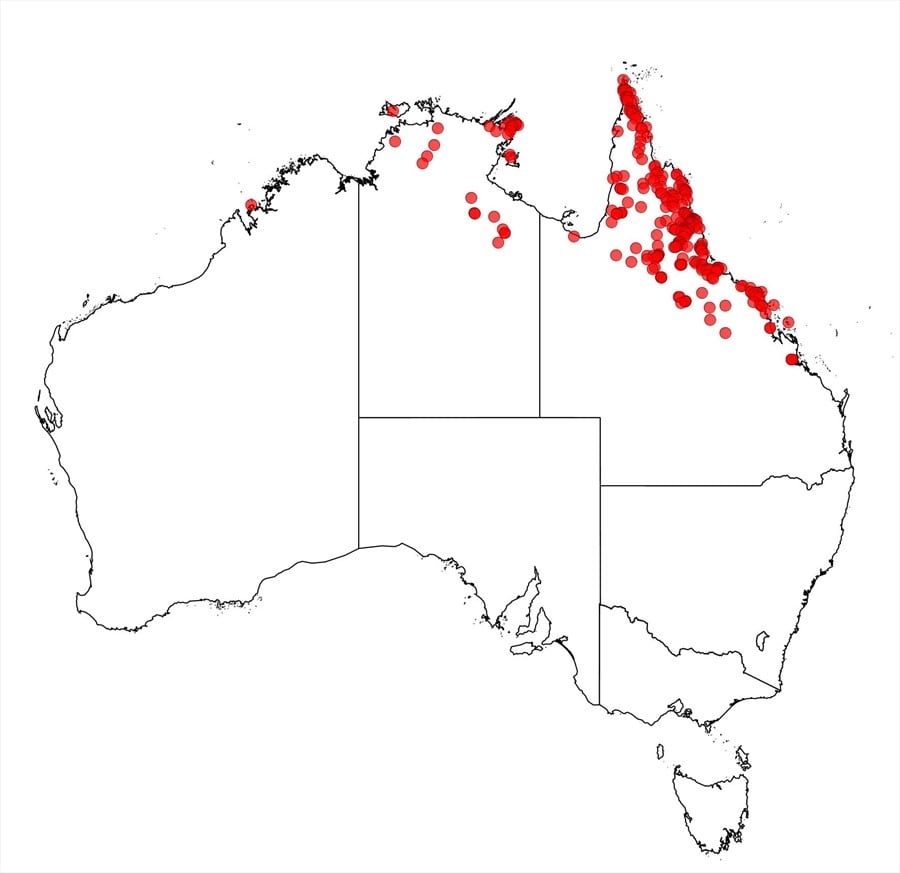Acacia simsii A.Cunn. ex Benth.
WATTLE
Acacias of Australia
Common Name
Heathlands Wattle, Sims’ Wattle
Family
Fabaceae
Distribution
Widespread, occurring in N.T. in the Gove area and on the edge of the Barkly Tableland, in northern Qld from Cape York S to near Mackay. Also recorded from Papua New Guinea, fide L.Pedley, Contrib. Queensland Herb. 18: 13 (1975).
Description
Glabrous shrub 1–4 m high. Branchlets apically ribbed and angled. Phyllodes linear to narrowly elliptic, straight to incurved, 5–11 (–14) cm long, 2–7 (–10) mm wide, acute to acuminate, mucronulate, thinly coriaceous, with 3 or 4 main nerves and few ±obscure longitudinally anastomosing minor nerves in between; gland 0–2 mm above pulvinus, 1–5 others along adaxial margin. Inflorescences simple or rudimentary 1- or 2-headed racemes with axes 0.5–2 mm long, normally occurring as an axillary group of heads; peduncles 5–13 mm long; basal bract persistent; heads globular, 3.5–4 mm diam., 25–35-flowered, golden. Flowers 5-merous; sepals free or to 2/3-united. Pods linear, straight-edged to shallowly constricted between seeds (occasional deep constrictions can occur), flat but raised over seeds alternately on each side, to 8 cm long, 4–5 (–7) mm wide, thinly coriaceous. Seeds longitudinal, subcircular to broadly elliptic, 2.5–4 mm long, dull, brown-black; aril clavate.
Habitat
Usually grows in sand and gravel in eucalypt open forest and woodland, sometimes in closed heath on Cape York Peninsula and sometimes forming closed scrub in disturbed areas.Found on gentle slopes and plains in coastal areas and inland on gently undulating terrain.
Specimens
N.T.: 11.3 km W of Giddy R. crossing, J.R.Maconochie 1528 (K, PERTH); 72.4 km NNE of Creswell Stn, R.A.Perry 1674 (K, PERTH). Qld: 9.2 km by road SW of Cannonvale, R.Coveny 6919 & P.Hind (BRI n.v., NSW, PERTH); 36 km from Laura, J.Moriarty 1045 (PERTH).
Notes
Closely related to A. multisiliqua which has generally shorter phyllodes with the lowermost gland normally further removed from the pulvinus, shorter peduncles and larger, differently shaped seeds. Also related to A. burrana, A. complanata and A. ramiflora (see L.Pedley, Austrobaileya 1: 209 (1978) and 2: 322–327 (1987), for other relatives).
FOA Reference
Data derived from Flora of Australia Volumes 11A (2001), 11B (2001) and 12 (1998), products of ABRS, ©Commonwealth of Australia
Author
Minor edits by B.R.Maslin, J.Reid & J.Rogers
R.S.Cowan, B.R.Maslin
This identification key and fact sheets are available as a mobile application:
URL: https://apps.lucidcentral.org/wattle/
© Copyright 2018. All rights reserved.

